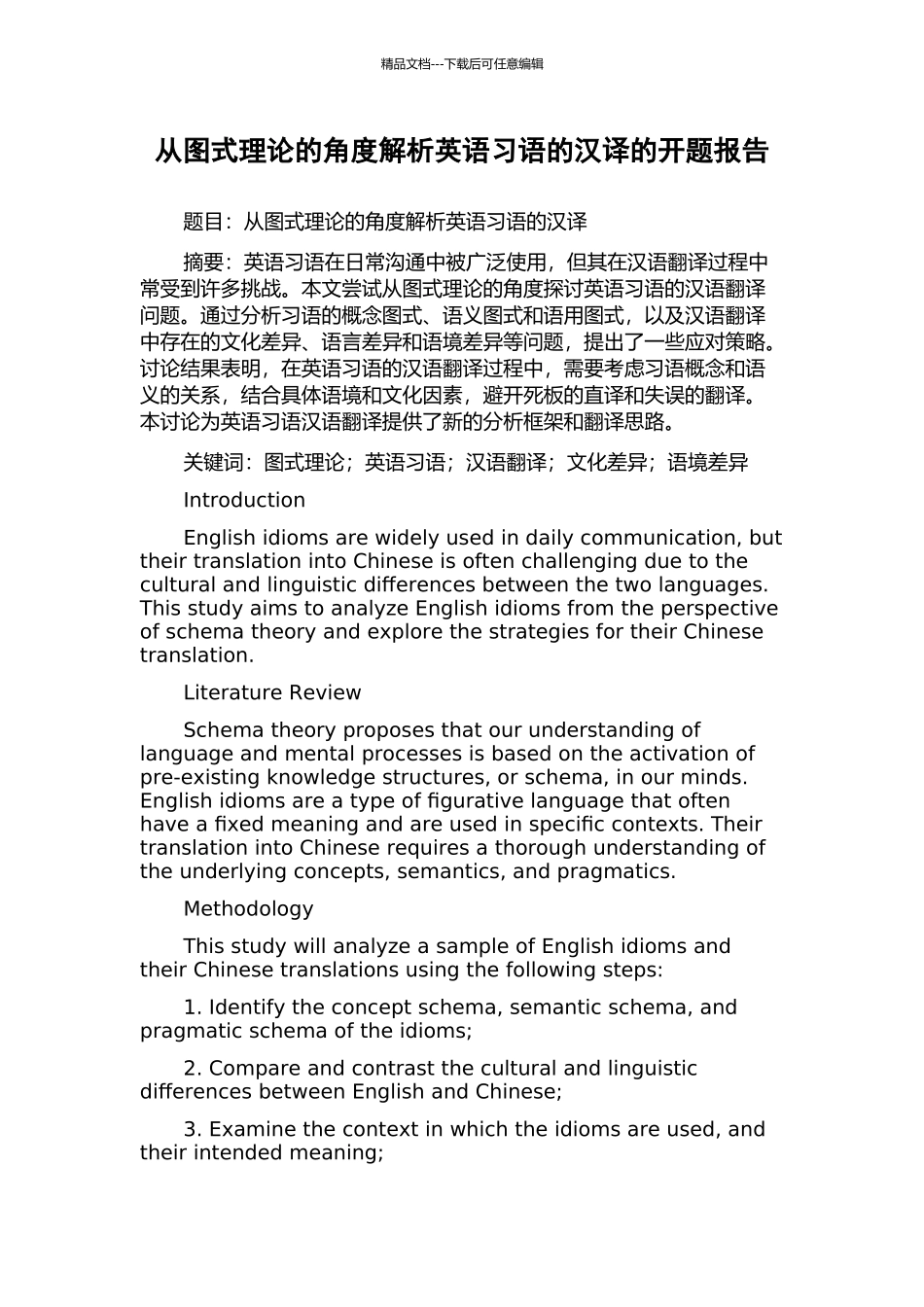精品文档---下载后可任意编辑从图式理论的角度解析英语习语的汉译的开题报告题目:从图式理论的角度解析英语习语的汉译摘要:英语习语在日常沟通中被广泛使用,但其在汉语翻译过程中常受到许多挑战。本文尝试从图式理论的角度探讨英语习语的汉语翻译问题。通过分析习语的概念图式、语义图式和语用图式,以及汉语翻译中存在的文化差异、语言差异和语境差异等问题,提出了一些应对策略。讨论结果表明,在英语习语的汉语翻译过程中,需要考虑习语概念和语义的关系,结合具体语境和文化因素,避开死板的直译和失误的翻译。本讨论为英语习语汉语翻译提供了新的分析框架和翻译思路。关键词:图式理论;英语习语;汉语翻译;文化差异;语境差异IntroductionEnglish idioms are widely used in daily communication, but their translation into Chinese is often challenging due to the cultural and linguistic differences between the two languages. This study aims to analyze English idioms from the perspective of schema theory and explore the strategies for their Chinese translation.Literature ReviewSchema theory proposes that our understanding of language and mental processes is based on the activation of pre-existing knowledge structures, or schema, in our minds. English idioms are a type of figurative language that often have a fixed meaning and are used in specific contexts. Their translation into Chinese requires a thorough understanding of the underlying concepts, semantics, and pragmatics.MethodologyThis study will analyze a sample of English idioms and their Chinese translations using the following steps:1. Identify the concept schema, semantic schema, and pragmatic schema of the idioms;2. Compare and contrast the cultural and linguistic differences between English and Chinese;3. Examine the context in which the idioms are used, and their intended meaning;精品文档---下载后可任意编辑4. Evaluate the effectiveness of the translations in conveying the original me...

